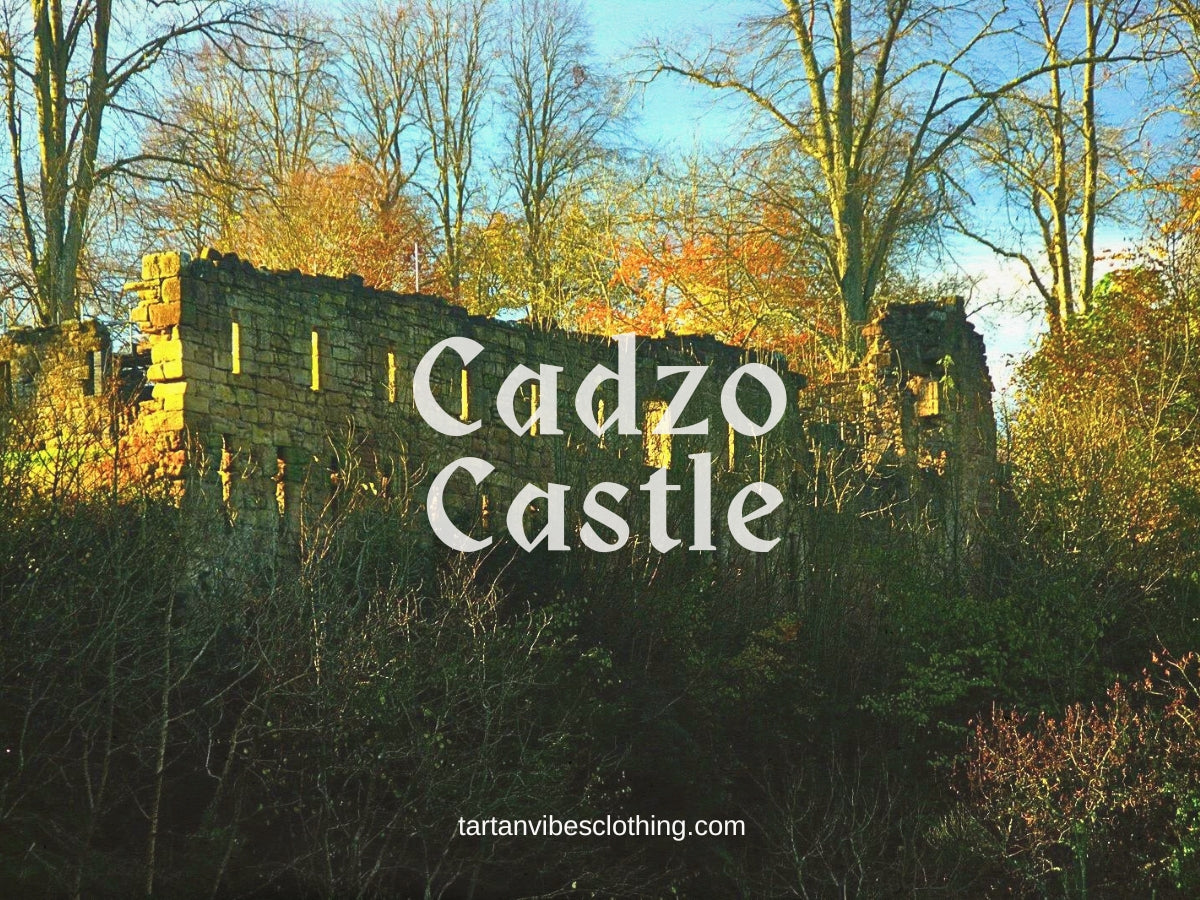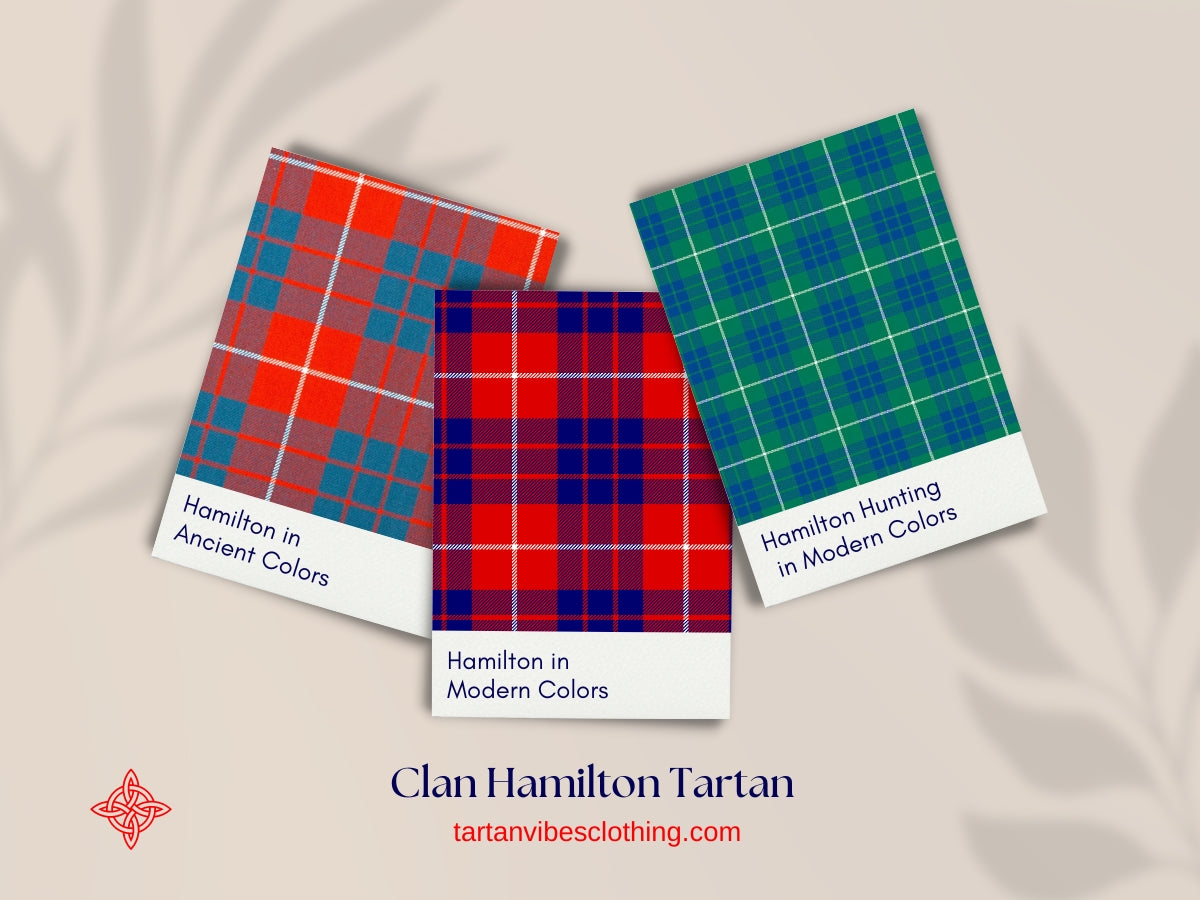Discovering Clan Hamilton: Exploring the Heritage and Legacy of a Storied Scottish Clan
by Teejay Smith on Mar 13, 2024
Table of Content
Scotland's rich history is woven with the tales of ancient clans, each a vibrant thread in the colorful tapestry of the nation's cultural heritage. Among these illustrious clans of Scotland stands Clan Hamilton, a prominent lineage with a legacy that spans centuries. In this article, we delve into the captivating history, traditions, and notable figures of Clan Hamilton, shedding light on their enduring influence and contributions to Scottish history.
Origins of Clan Hamilton
Clan Hamilton History

Throughout the centuries, Clan Hamilton played a prominent role in Scottish history, with its members rising to positions of power and influence. Here are some key milestones in the clan's history:
14th Century: The Hamiltons solidified their position as a powerful clan in the 14th century when Sir James Hamilton, 1st Lord Hamilton, was granted extensive lands and titles by King Robert the Bruce for his loyal service.
15th Century: The Hamiltons continued to rise in prominence during the 15th century, with successive generations of clan chiefs serving as trusted advisors to the Scottish monarchy.
16th Century: The 16th century saw the Hamiltons embroiled in political intrigue and conflict, with clan members playing critical roles in the turbulent events of the period, including the reigns of Mary, Queen of Scots, and her son, James VI.
17th Century: Clan Hamilton faced challenges during the 17th century, including the tumultuous years of the Civil Wars and the Covenanting period, which saw religious and political strife across Scotland.
18th Century: The Hamiltons continued to wield influence during the 18th century, with clan members serving in various capacities in government, the military, and the arts.
📜 Please also see the history at https://www.clanhamilton.org/
Territory of Clan Hamilton

The territorial influence of Clan Hamilton stretched across various regions of Scotland, with their ancestral lands firmly established in Lanarkshire. Here, they held vast estates, including the strategically significant Cadzow Castle, which served as the seat of the clan chiefs and remains a symbol of their power and influence within the region.
Over time, the Hamiltons expanded their territorial holdings beyond Lanarkshire, acquiring lands and influence in other regions of Scotland. Some notable examples include:
- Lothian: The Hamiltons established themselves in Lothian through marriages and acquisitions, with Hamilton Palace becoming a prominent residence in the 17th century.
- Ayrshire: The Hamiltons held lands in Ayrshire, with figures like the Earls of Haddington playing a significant role in the region's history.
- Other parts of Scotland: The Hamiltons also gained influence in different areas like Fife and Angus through marriages and alliances.
Clan Hamilton Castle

Cadzow Castle, situated near the town of Hamilton, was the principal stronghold of Clan Hamilton. Initially built in the 12th century, the castle underwent several renovations over the centuries, reflecting the clan's power and prestige. While the castle now lies in ruins, it remains a poignant symbol of Clan Hamilton's ancestral heritage.
Clan Hamilton: Chiefs and Notable Figures
Clan Hamilton's history is rich with leadership passed down through generations. Historical records suggest Walter FitzGilbert (13th century), a Norman nobleman who married the heiress of Cadzow Castle, as the first documented Chief. This union established the clan's lineage, the "Hamilton" surname, and marked the rise of a powerful clan that would influence Scottish history.
The legacy continues with the current Chief, Alexander Douglas-Hamilton, 16th Duke of Hamilton. He assumed the role in 2010, inheriting the title and a rich tradition of leadership and service. He holds various hereditary titles and serves as Keeper of the Palace of Holyroodhouse and Hereditary Crown Bearer of Scotland.

Notable Figures:
Military:
Duke of Abercorn: A prominent military leader during the Napoleonic Wars.
Claud Hamilton: Played a crucial role in defending Stirling Castle during the Wars of Scottish Independence.
Politics:
Lord Frederic Hamilton: A British politician who served as First Lord of the Admiralty in the 19th century.
Lady Anne Hamilton: A Scottish noblewoman who wielded significant influence in court politics during the reign of James VI.
Arts and Literature:
William Hamilton, 12th Duke of Hamilton: A notable patron of the arts during the Scottish Enlightenment.
Gavin Hamilton: A renowned Scottish painter famous for his historical and mythological works.
Clan Hamilton Traditions
Clan Hamilton boasts a rich tapestry of traditions that have been passed down through generations. These traditions include:
Clan Gatherings: Clan Hamilton members often gather for reunions, ceilidhs, and other events to celebrate their shared heritage and strengthen familial bonds.
Tartan: The Hamilton tartan, with its distinctive pattern of red, green, and white, serves as a symbol of clan identity and pride.
Clan Hamilton Coat of Arms
Shield:
The shield features a quarterly design, with each quarter representing a different aspect of the clan's heritage:
First and fourth quarters: These quarters display three cinquefoils (five-petaled flowers), which are believed to represent the five wounds of Christ.
Second quarter: This quarter displays a lion rampant, which is a symbol of strength, courage, and nobility. The lion is also armed and langued gules (meaning its teeth and tongue are red), which further emphasizes these qualities.
Third quarter: This quarter displays a galley (ship), which represents the clan's maritime connections and its history of trade and exploration.
Motto:
Clan Hamilton Crest

The crest of Clan Hamilton depicts a dexter hand holding up a ducal coronet. This symbolizes the clan's loyalty to the crown and its willingness to serve its monarch.
Gaelic Name: Hamultun
Crest: In a ducal coronet an oak tree fructed and penetrated transversely in the main stem by a frame saw Proper, the frame Or
Motto: Through
Origin of Name: Placename, England, Hambledon
Lands: Renfrewshire, Arran
Historic Seat: Lennoxlove House, East Lothian
Clan Chief: His Grace The Duke of Hamilton
The crest of Clan Hamilton consists of a dexter hand holding up a ducal cap, symbolizing the clan's loyalty to the crown.
Clan Hamilton Tartan
The Hamilton tartan is a distinctive and vibrant pattern that members of Clan Hamilton have proudly worn for centuries. It is a symbol of the clan's rich history, shared heritage, and unwavering loyalty.

Colors and Symbolism:
The Hamilton tartan is characterized by a striking blend of red, green, and white. Each color carries its own symbolic meaning:
Red: This bold color represents bravery, strength, and the fierce spirit of the clan.
Green: Symbolizing the lush landscapes of Scotland, the clan's homeland, green represents hope, loyalty, and a deep connection to the land.
White: Often associated with purity and nobility, white embodies the enduring spirit of Clan Hamilton and its commitment to upholding its values.
Variations and Design:
The Hamilton tartan features several variations, each with subtle differences in shade and pattern. These variations often reflect specific branches or families within the clan, fostering a sense of unique identity while still maintaining a connection to the more prominent clan.
In contrast to the vibrant colors of the Hamilton tartan, the Clan Buchanan tartan presents a captivating tapestry woven with a blend of earthy tones and bold accents. This unique color palette, often featuring deep blues, greens, and flashes of red, reflects the rugged beauty of the clan's ancestral homeland – the Loch Lomond region.
Embracing Tradition: Wearing the Colors of Clan Hamilton
One of the most iconic symbols of Scottish culture is the kilt, a traditional garment worn by members of Clan Hamilton and other Scottish clans. Embracing the tradition of wearing the Clan Hamilton tartan allows clan members to honor their heritage and connect with their Scottish roots. Continuing the legacy of their ancestors, clan members proudly display the colors of Clan Hamilton at special occasions such as weddings, festivals, and Highland games.
Explore the timeless traditions of Hamilton Clan through our collection of tartan products on our website. And bring a piece of the clan's history into your present.
Conclusion
In conclusion, Clan Hamilton stands as a testament to Scotland's rich and vibrant clan heritage. From its humble origins to its enduring traditions and notable achievements, the clan continues to inspire pride and admiration among its members and all who cherish the heritage of Scotland. Through their enduring legacy, Clan Hamilton remains an integral part of Scotland's cultural tapestry, ensuring that their noble lineage and traditions endure for generations to come.
Frequently Asked Questions
Is Hamilton Irish or Scottish?
The name Hamilton probably originated in the village of Hamilton, Leicestershire, England, but bearers of that name became established in the 13th century in Lanarkshire, Scotland.
Who is the Duke of Hamilton in Scotland?
Alexander Douglas Douglas-Hamilton, 16th Duke of Hamilton, 13th Duke of Brandon (born 31 March 1978), is a Scottish nobleman and the premier peer of Scotland.
What are the colors of the Hamilton clan?
The Hamilton Tartan consists of three broad blue or navy stripes crossing another trio of broad stripes split by single thin white lines.
What does Hamilton mean in Scottish?
The distribution of the surname Hamilton is predominantly in Scotland. However, its roots actually lie south of the border. It is believed that the name comes from the Old English 'hamel', meaning 'crooked hill', and 'tun' meaning 'farm'. In other words, the 'farm at the crooked hill'.






